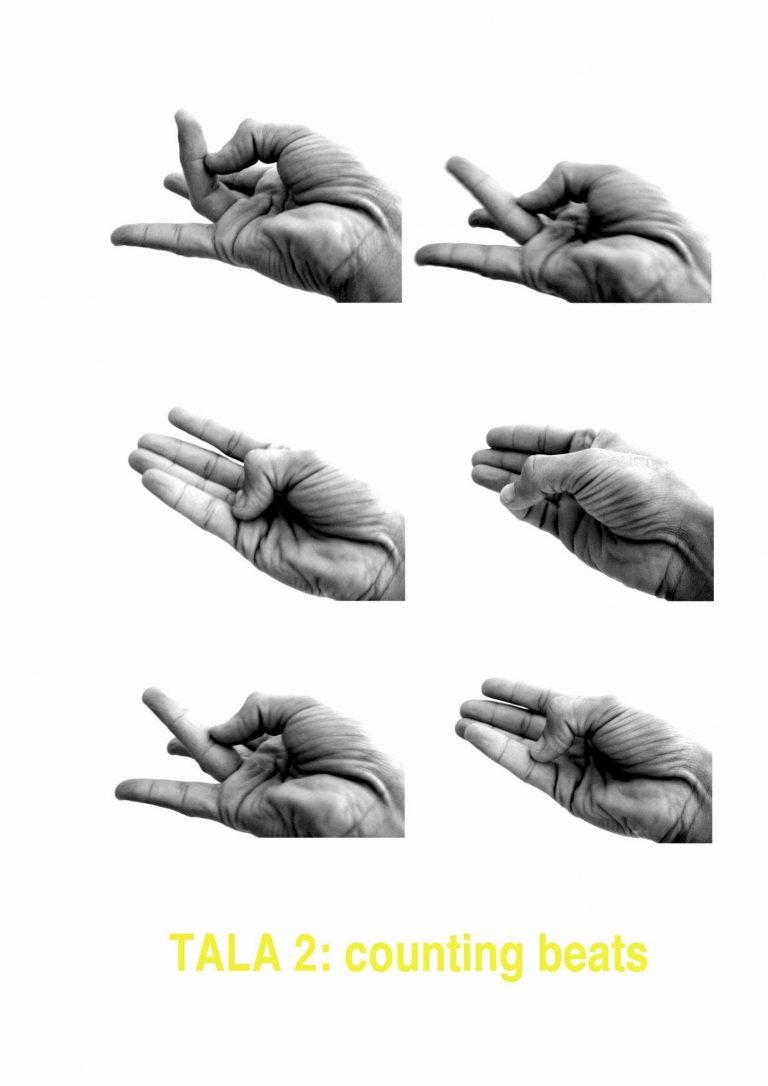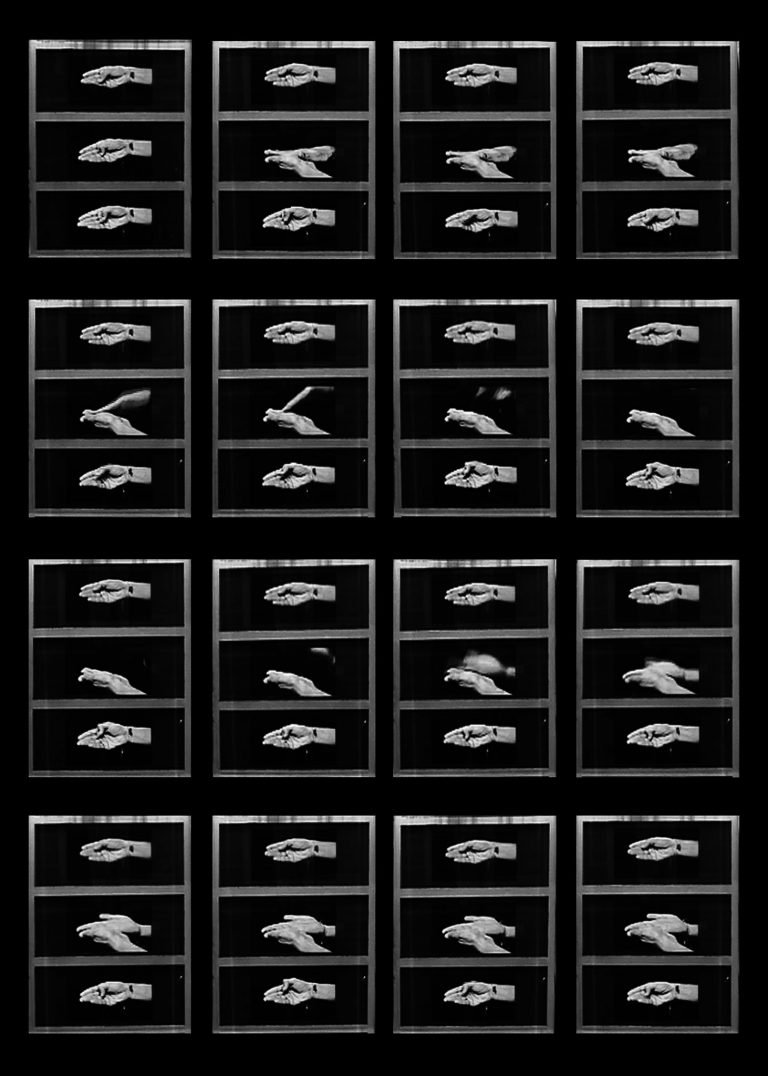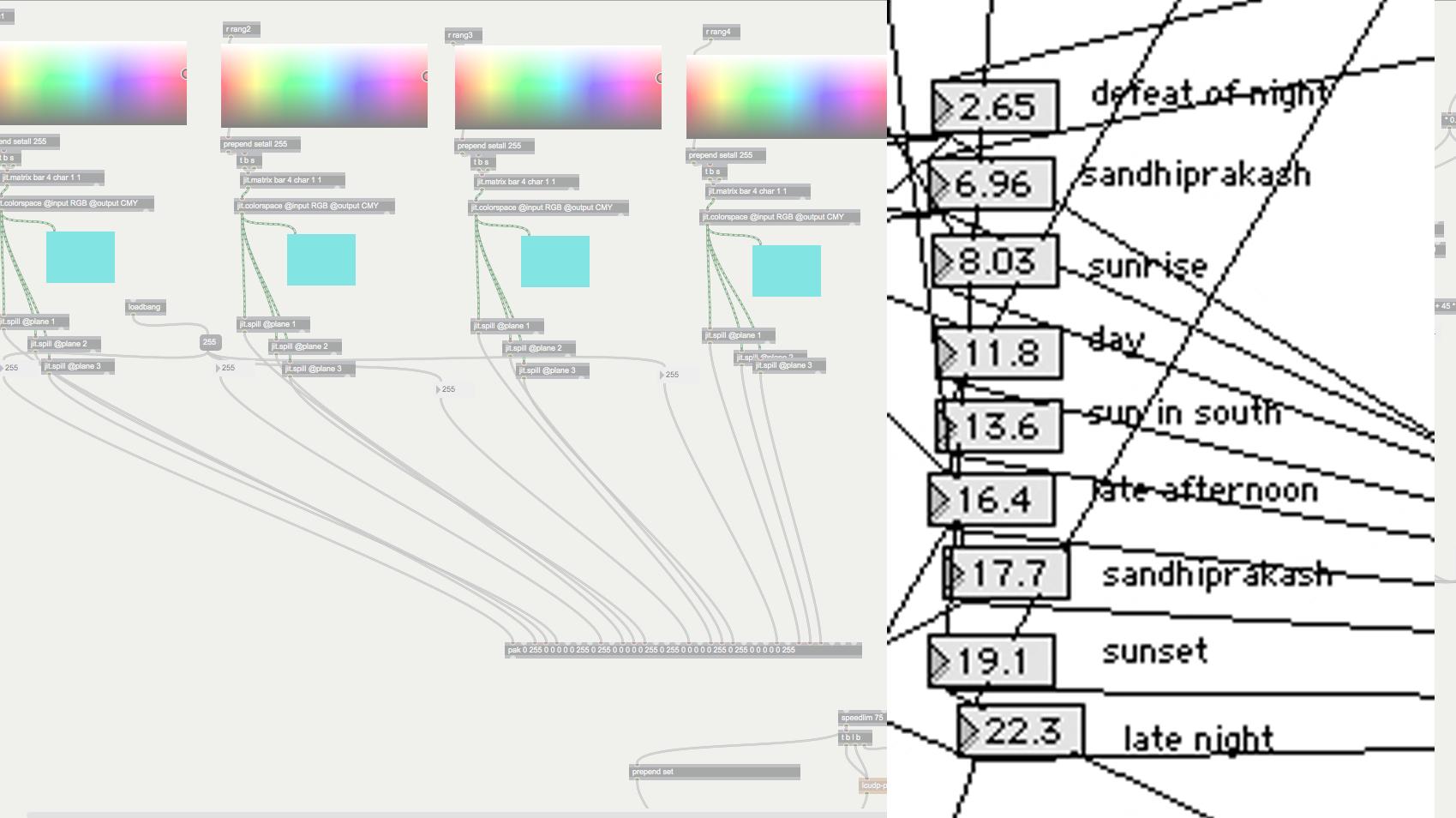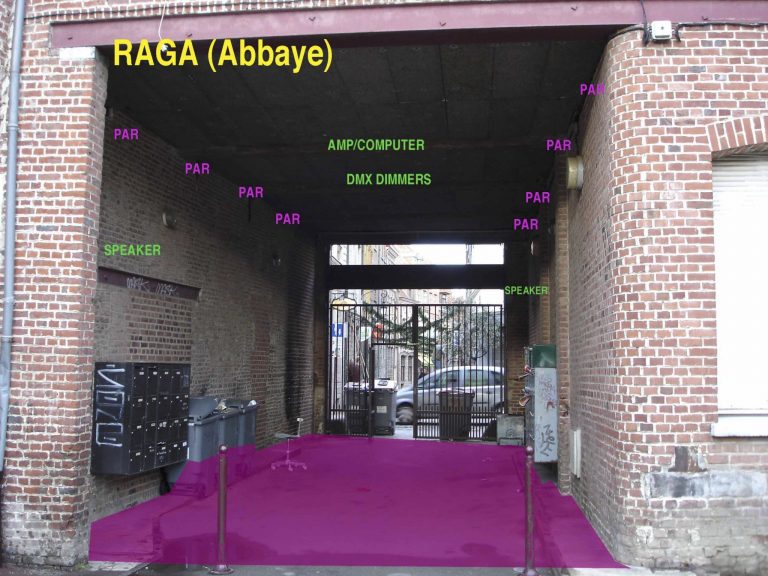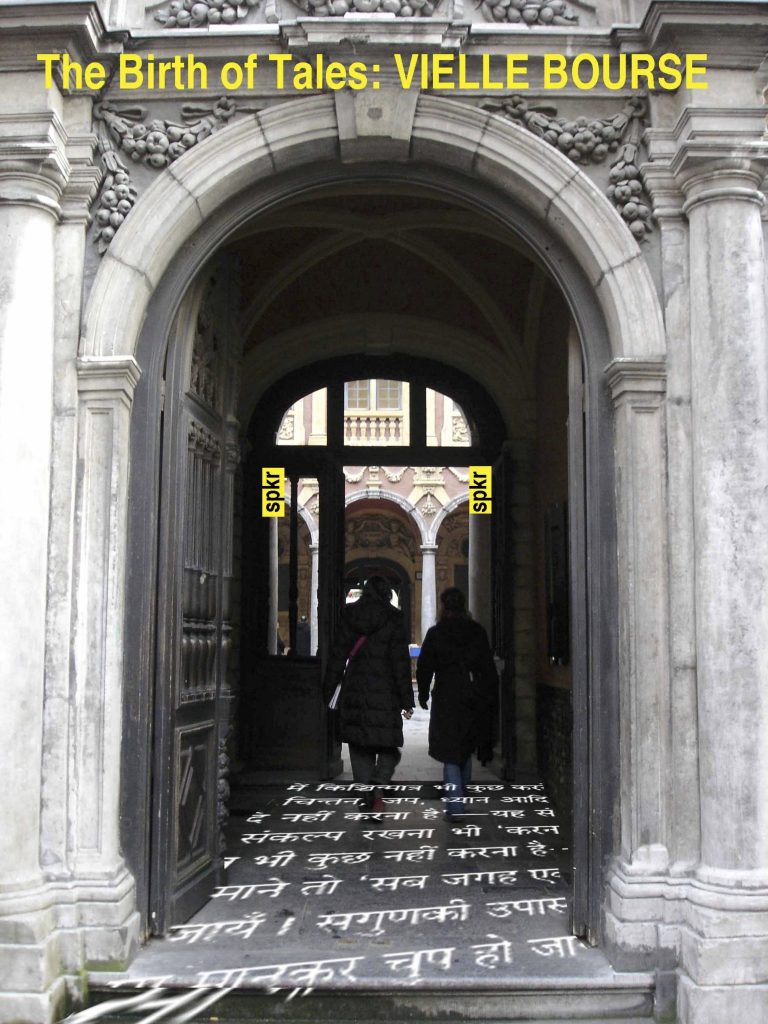i. s. t.
Suite of idiosyncratic public clocks
Multiple lights, screens and loudspeakers, computers, custom hardware
Commissioned by Lille300, 2004
The first two clocks in this suite were realized in the city of Lille in 2004.
TĀLA
‘Tāla’ = ‘cyclical rhythm’
Hands count time using three different Indian rhythmic cycles: ektāl (12 beats), tīntāl (16 beats) and rupaktāl (7 beats). There is a repeating pattern of 12 cycles of ektāl at 20 beats per minutes (bpm), 16 of tīntāl at 60 bpm, and 7 of rupaktāl at 120 bpm. Theoretically, the patterns and tempi chosen synchronise perfectly on the “1” every 90h 4m 48s.
RĀGA
‘Rāga’ = ‘that which colours the mind’
An imprecise but accurate timekeeper that indicates vaguely-defined periods such as deep night, twilight, and dawn by improvising in rāga (musical modes) associated with the period. The background drone, representing the primordial silence, is punctuated by these improvisations. Each period is also indicated by light whose colour changes subtly. The clock uses a table of positions of the sun over Lille. In North Indian music, different rāga are associated with different moods and seasons as well as times of day.
IST
IST precisely indicates time by announcing the departures and arrivals of trains from railway stations around India (New Delhi, Calcutta Howrah and Sealdah, Guwahati, Chennai Central and Egmore, Trivandrum, and Bombay CST, Central and Bandra). IST (Indian Standard Time) is the official name for India’s time zone (UTC +5.30). The work recalls the intertwining of the history of the railway and the history of timekeeping.
ADDĀ GHAR
‘Addā ghar’ = ‘house for discussion’
A language clock that plays sentences in Tamil, Kannada, Malayalam, Bengali, Hindi, and Gujarati, both cleanly and progressively distorted to bring out resonant sounds of the language and the person speaking. At regular intervals, it ‘chimes’ the phonemes of Sanskrit (the parent langauge) in a mnemonic arrangement from the grammar of Pāṇini.
BIRTH OF TALES
Narrates the passage of the day through readings from the Jataka Tales.
MANTRAYANTRA
‘Mantra yantra’ = ‘instrument for chanting’
An instrument of meditation, the clock indicates the waxing and waning of moods throughout the day. Urban and rural sounds, including those of eating, the daily commute, work and prayer, illustrate the heterogeneity and contradictions that make up contemporary India.

